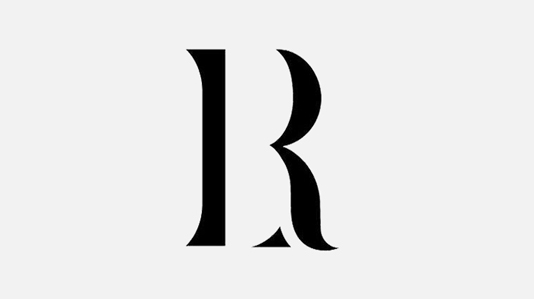Listen to the podcast: Siddartha Rao, Litigation Partner, discusses the matter on Bloomberg Radio (begins at 30:18)
I. Flores Lawsuit Overview
On February 1, 2022, former Miami Dolphins head coach Brian Flores brought a race discrimination class action suit against the NFL and several of its teams. His complaint alleges that the New York Giants denied him a head coaching position and that the Giants subjected him to a sham interview due to his race. Mr. Flores further claims that, for decades, the NFL has a “tortured and unacceptable history with race relations,” and has discriminatorily denied Black coaches employment opportunities.
Coach Flores pleads violations of several state laws and federal law Section 1981 of the Civil Rights Act of 1866 (“Section 1981”). Moreover, the complaint indicates that Mr. Flores will also pursue a claim of race discrimination under Title VII of the 1964 Civil Rights Act (“Title VII”). In addition to the historical significance and exposure of NFL’s hiring practices, his case presents an interesting litigation maneuver, particularly, the strategy behind bringing congruent Section 1981 and Title VII claims.
II. Title VII and Section 1981 Compared
Title VII and Section 1981 are federal laws that protect employees from discrimination. When bringing a discrimination lawsuit, employees may simultaneously allege claims under each statute. However, the two laws cover different classes of people and have distinct procedural requirements.
A. Who Can Bring Title VII and Section 1981 Claims?
Title VII covers a broader spectrum of discrimination claims than Section 1981. Claims concerning discrimination based on membership in any protected class (race, color, national origin, sex, or religion) all arise under Title VII. In contrast, Section 1981 only protects individuals against racial discrimination.
Also, the standard for a successful claim under Title VII is less stringent that Section 1981. Title VII prohibits not only intentional discrimination but also facially neutral practices that have a discriminatory effect against a protected class. As opposed to a Section 1981 claim, where suing employees must show that race was the but for cause of the injury meaning the defendant would have acted differently if it were not for the plaintiff’s race.
Title VII and Section 1981 also apply to businesses of different sizes. Title VII only applies to employers with 15 or more employees. Section 1981 covers all private employers, regardless of the number of employees.
B. Procedural Requirements for Filing a Title VII or Section 1981 Claims
Evidenced by the complaint filed on behalf of Mr. Flores, there are distinct processes for filing Title VII and Section 1981 claims. These processes differ in that Title VII requires exhaustion of administrative remedies prior to filing, while Section 1981 does not. Interestingly, by utilizing Section 1981, Mr. Flores’s attorneys have cleverly evaded a potential delay caused by Title’s VII’s administrative remedy requirement.
i. Filing a Title VII claim:
To bring a Title VII claim, employees must have exhausted their administrative remedies. Such exhaustion requires filing a charge with the Equal Employment Opportunity Commission (“EEOC”) and, eventually, obtaining a Notice of Right to Sue.
- Filing a Charge: In general, employees must file a charge with the EEOC within 180 days of the alleged discrimination event. The 180-day deadline may be extended to 300 days if the complaint is also covered by a state or local anti-discrimination law. In New York State, for instance, employees have up to 300 days to file a charge with the EEOC. Like the statute of limitations’ expiration, if an employee fails to file with EEOC within the proper time period, they will forfeit their right to allege their Title VII claims in federal court.
- EEOC Investigation: Once a charge is filed, the EEOC may initiate an investigation. But, the EEOC does not have a time limit to complete an investigation. The investigation period depends on the circumstances of each individual case. At the conclusion of the investigation, the EEOC has the authority to issue a finding of discrimination if the facts permit.
- Notice of Right to Sue: Regardless of whether the EEOC issues a finding of discrimination, the EEOC may provide a Notice of Right to Sue to the employee, which permits the employee to file a lawsuit in federal or state court. Such a lawsuit must be filed within 90 days upon receipt of the notice.
ii. Filing a Section 1981 Claim:
Administrative prerequisites do not apply to Section 1981 claims. Accordingly, when bringing a Section 1981 claim, employees need not file a charge with the EEOC nor obtain a Notice of Right to Sue prior to filing a lawsuit.
Unlike Title VII’s strict timing constraints, Congress has not specified a statute of limitations for filing Section 1981 claims. As such, federal courts will generally turn to state law for statutes of limitations in actions brought under Section 1981 that permit more time to file a lawsuit than Title VII. In practice, courts have allowed Section 1981 claims to be filed within four years of the alleged discriminatory incident.
III. Damages
Title VII limits the amount of compensatory and punitive damages a person can recover depending on the size of the employers. Generally, the most an employee can recover is $300,000, and this is only available if their claim is against an employer of more than 500 employees. Unlike Title VII, Section 1981 does not cap its damage awards.
IV. Future Considerations
For these reasons, Section 1981 is often invoked by employees who are seeking to avoid Title VII’s procedural requirements, and in some cases, to provide the employee access to additional damages. As shown in Flores’s case, Flores’ attorney seemed to strategically choose the Section 1981 route instead of waiting for a right to sue letter under Title VII. This strategy allowed flexibility as to the timing of filing the lawsuit against the NFL on the first day of Black History Month and before the 2022 Superbowl took place.
For now, while Flores has not formally pleaded a claim under Title VII, his complaint states that he will file a charge with the EEOC and add a Title VII claim when appropriate. Notably, under the federal rules of civil procedure, courts generally would allow amendments to a complaint freely, unless amendment would cause undue delay, was in bad faith, or would unduly prejudice the opposing party. Accordingly, so long as Mr. Flores amends his complaint early in the proceedings, his will likely be able to add a Title VII claim.
Conclusion
Flores’s pending lawsuit shows an interesting litigation strategy to approach an employment discrimination dispute. Determining the best timing and strategy of bringing a discrimination claim can be complex. Employees who believe they have been discriminated against by their employers should consult with a qualified employment lawyer to learn more about their available courses of action.
Contributions to this blog by Ru Hochen.




